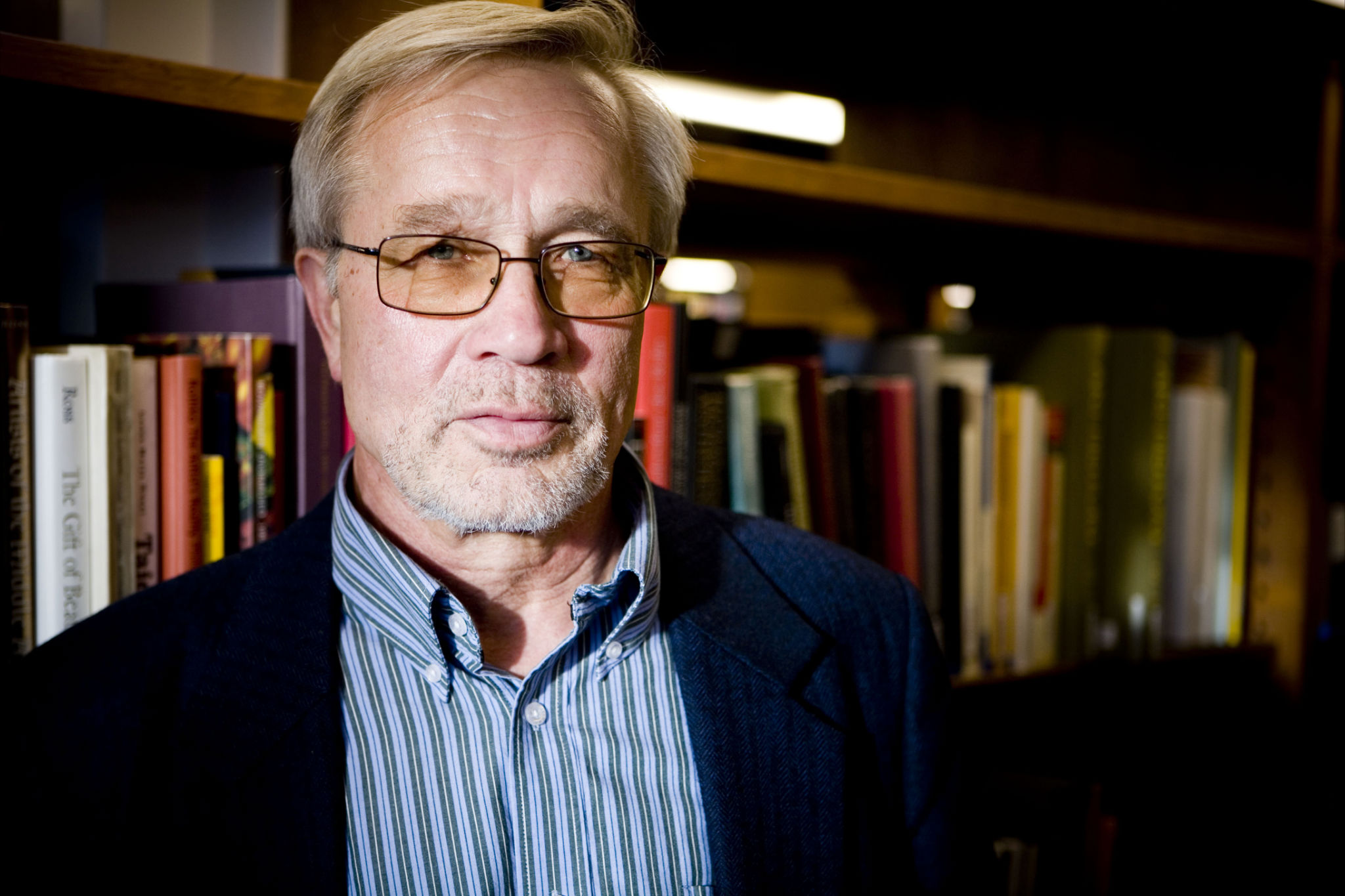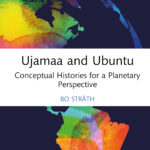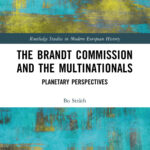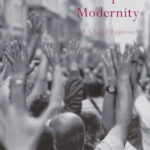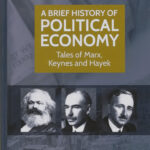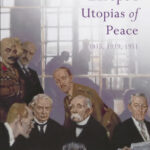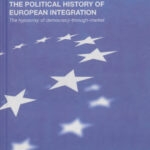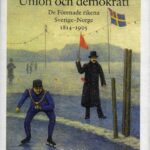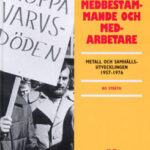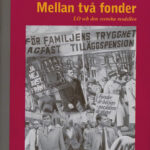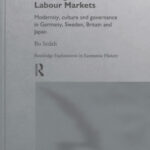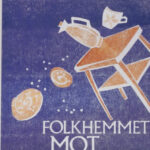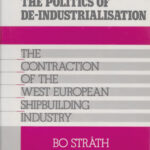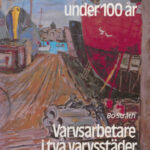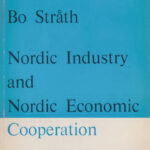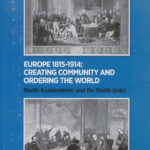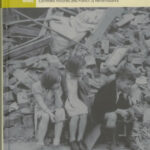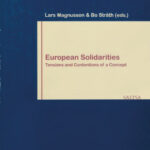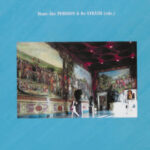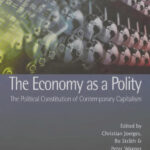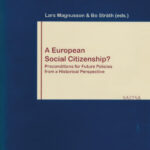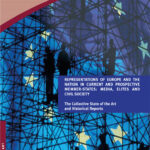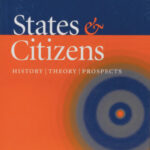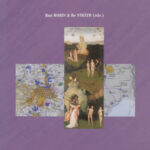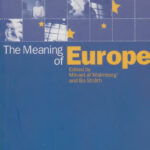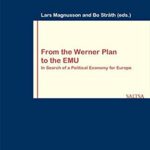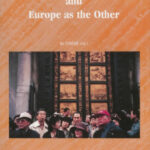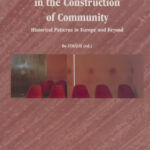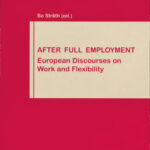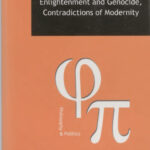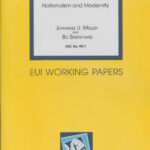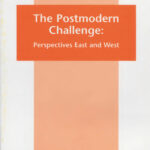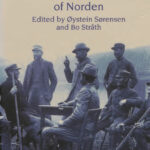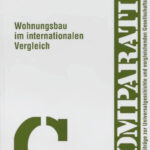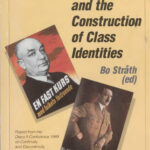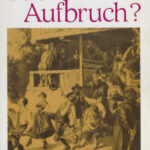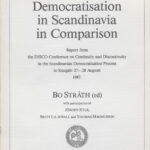This essay argues for a new universal meta norm in a time when there is no convincing grand narrative. The point of reference is the UN universal human rights declaration in 1948 and the de-essentialising postcolonial debate around key concepts like hybridity, créolité, blending of ideas, entanglement, diaspora, nomadism, etc, before the essentialising market discourse absorbed and transformed this approach. Universal means that all humans are equal across differences like thin-thick, small-tall, eye color and skin color, political convictions and religious beliefs. Differences in these and other respects make up universal equality. However, regarding the enlightenment values of freedom and equality, humans are not equal. Policies and politics in a planetary perspective are requested to reduce the tension between them. The meta norm provides a vision of the future. The practice in politics and social life deviates from the norm. Hypocrisy often tries to conceal the deviation of practice from the norm. The meta norm, therefore, continuously needs feedback from a forward-looking historical scenario to calibrate the distance between the norm and practice, outlining a future based on universalism with less hypocrisy.
1945: The restart of the enlightenment as modernisation
Work on the modernisation narrative began in the 1950s, after the silence that had prevailed since 1945. The work was a reconstruction and updating of the enlightenment imaginary that had been discarded by the world wars. After the catastrophe, expectations of a better future slowly returned, underpinning the beginning of a new grand narrative of progress and enlightenment values. In the colonies, hopes for decolonisation became expectations, and under the banner of development, the belief grew that underdeveloped countries would catch up with what, despite the ruins outside the US, were called developed countries. The new language, under the key concept of modernisation and the resumption of the enlightenment imaginary, took off and gained momentum in the 1960s. The new universalism about a new world of progress, enlightenment and modernity was an astonishingly quick response to the atrocities of the war, or rather two world wars and a deep economic, social and political crisis in between, a response of confidence underpinned by economic activity to rebuild what the war had destroyed and by the promise of decolonisation. The two reconstructions, the intellectual and the physical, went hand in hand, mutually reinforcing each other.
The motor of the enlightenment imaginary was the Western part of the global North but the enlightenment was universally thought. The case in point is the UN universal human rights declaration adopted in Paris on 10 December 1948. It was a common standard for all peoples saying that all humans are born free and equal with dignity with a right to recognition everywhere before the law. Everyone has a right to nationality, freedom of thought, expression, conscience and religion. Everyone has a right to own property and to an adequate standard of living. The declaration was the legal formulation of the enlightenment as a normative order, which had a political basis, too.
At the heart of the political enlightenment imaginary were the concepts of freedom and equality, which were thought to be compatible and unified. However, they had already split in the French Revolution, when the sans-culottes were left behind after helping to ignite the revolution. During the industrialisation of the nineteenth century, the sans-culottes became an organised working class. The formation of capital and labour led to class struggle, though not to a world revolution as a great thinker had predicted. But the class struggle intensified the tension between the two enlightenment values. The owners of capital defended private property with the concept of liberty, and the representatives of labour demanded higher wages and better working conditions with the concept of equality. The 1930s brought the culmination of this clash of values after an economic collapse that ended in mass support for the national socialist promise to solve the crisis. The left, the representatives of labour, could not agree on what the situation required, and the Nazis declared that they had the solution. The rest is well known.
Reconstruction after 1945 was an attempt to reunite freedom and equality politically. In the western part of the industrial North, Keynesian economic politics, with an active role for the governments, created an expansive equilibrium between capital and labour, freedom and equality, with the expectation of shared interests and prosperity. In the eastern part of the industrialised North, the practice of socialism ended in a repressive nomenclature far removed from the values of the enlightenment. What was innovative was how the South got a distinct profile in the modernisation discourse. They were no longer the passive colonies ruled from the North. The promise of decolonisation and development, freedom and equality for the poor South made the potential of becoming equals of the rich North perceptible. They would achieve the same standard, still lagging but catching up. The enlightenment became global, even universal, in a new sense, and the ideals of freedom and equality seemed realistic, achievable through good politics, and raising global expectations of progress.
Another legacy of the enlightenment: Critique, crisis, and hypocrisy
At the same time, however, the Cold War mixed expectations in the future with fear and doubt. The German historian Reinhart Koselleck voiced these fears and doubts in his masterful dissertation, Kritik und Krise (1954, publ. 1959). [1] How could it be, he asked, that what had been held together in the philosophy of the enlightenment, the values of freedom and equality, had split into two ideologies which, in mutual contempt, had brought the world to the brink of nuclear annihilation? With its ideological conflict, the Cold War was the volcanic subtext of the galvanising discourse on modernisation, progress, development, freedom and equality.
Koselleck saw the dynamic between critique and crisis as the engine of modernity. Social critique drove societies into crisis, which forced solutions. The solutions to a crisis usually produced winners and losers, which made the solutions unstable and triggered new crises that kept the dynamic going. The losers usually had more reason to rethink their situation and came up with more fruitful solutions about how to manage the future. The winners reflected less on how and why they had become winners, and from their podium they often degenerated into hypocrisy, provoking challenges and new crises. Koselleck pointed out the etymological link between crisis and hypocrisy. The latter was the hyper-crisis.
Koselleck didn’t argue that the sequences of critique and crisis necessarily ended in a catastrophe. He insisted that history was open and not teleological, goal-bound. His derivation of the Cold War from enlightenment was a warning of what could happen. Enlightenment in itself was no guarantee for progress. Hypocrisy and regress worked continuously. Self-critique was an important instrument against hypocrisy. Koselleck rejected history as the point of departure for prognosis. His Cold War view was a rear mirror view that didn’t tell what was waiting around the next curve. The critique could lead to corrections of developments gone astray and crises might lead to solutions instead of disaster.
Koselleck developed his critique and crisis scenario into the dynamic between experience and expectation. [2] People make experiences and translate them into expectations. The latter, he noted, could one day become new experiences of disappointment. His Cassandra warning was that if the accumulation of disappointments became too great, the energy to create new horizons of expectation might diminish or disappear. This scenario would mean a different end to history than Fukuyama’s one in mind after 1990.
In the early 1970s, the power of the modernisation narrative eroded in a crisis that recalls the polycrisis of our time. The collapse of the dollar, which led to an oil price shock, and hunger in the so-called Third World through rising food prices were the key components of the crisis. Progress didn’t follow the promises of the modernisation discourse. On the physical side, the initial reconstruction of what the war had destroyed increasingly became a rearmament race, the cost of which was a major factor in the dollar collapse that triggered the multi-crisis of the 1970s. Twenty years later, the military costs also provoked the fall of the Soviet empire. Koselleck never considered the end of the Cold War as the end of history. In his view, that kind of end-of-history talk was hypocrisy.
The Cold War meant that freedom was increasingly defined in terms of the military costs of defending it. Freedom became national or civilisational freedom, and it was at stake. The nuclear stalemate in the North made the South a military experiment field for conventional weapons. The connection between the (new-won) freedom and armament costs was valid there, too. The South’s struggle for freedom under the motto of decolonisation became an annexe to the ideologised struggle between the West and the East in the North. Public welfare became more and more a social cost competing with military expenses. The scope for holding the values of freedom and equality together was shrinking.
Deconstruction, critique and crisis
However, the erosion of the modernisation discourse had already begun in the 1960s, before the crisis, quite soon after the discourse had been established. The erosion was both epistemological ‒ academic producers of knowledge confronted the modernisation narrative and its conceptualisation of the world ‒ and political, as increasingly loud voices in the Third World began to argue that decolonisation was nothing but neo-colonialism, and radical Western academics claimed that development was continued dependence on the former colonial powers. It was not the North that developed the South but the South that fueled economic growth in the North. Poststructuralism, postmodernism and postcolonialism emerged as three interrelated schools of thought, which, with the dependence economists, undermined the modernisation narrative and its universalism from a theoretic perspective.
The structuralist regime of knowledge underpinning the modernisation narrative had emerged in the early twentieth century. It distinguished between reality and the language that formulated reality, between objective reality and subjective ideas. The academic interpreters and exegetes of reality formed a third order, mediating between reality and its conceptualisation and ideas about it. The critique of this order of things in the 1960s and 70s struck the heart of academic knowledge production. It was particularly strong in France under the name of poststructuralism, with protagonists such as Jacques Derrida, Roland Barthes, Michel Foucault, Gilles Deleuze and the somewhat younger Hélène Cixous, Jacques Rancière and Etienne Balibar, the latter the anti-racist philosopher and theorist of radical democracy. They argued that the structuralists wrongly assumed that reality was fixed and definable, that it could be described objectively by means of scientific investigation. In fact, the third mediating order between reality as fact and as conceptualisation was full of power implications. The producers of knowledge exercised power in the name of objective science. Foucault was particularly emphatic in his ambition to search for, find and reveal the power disguised as knowledge everywhere in social life.
The poststructuralists became the postmodernists who broke through with François Lyotard’s The Postmodern Condition in 1979. It was impossible, he argued, to grasp reality in a grand narrative such as modernisation. The vast amount of knowledge, already in the pre-stages of the digitised world, was divided into many separate fields of knowledge in which specialists struggled to describe reality in language games. The next step in the extension of this argument was the linguistic turn of the 1980s: There was no knowable reality beyond what could be described by words, concepts and language. The powerful knowledge producers constructed reality rather than interpreting it. This made them powerful. They were participants in the processes their predecessors claimed to describe objectively. (The division here of the epistemological transformation in distinct phases is a simplification. There was considerable continuity and overlap between the phases).
The epistemological crisis that began in the 1960s, accelerated in the 1970s, and culminated in the 1980s was accompanied by a political crisis around the argument that decolonisation was neo-colonialism and development dependency. This crisis culminated in the mid-1970s when the Third World rose up to demand a New International Economic Order (NIEO) with a more equitable distribution of the planet’s resources. Forming the Group of 77, they used the UN as an arena to pursue their goal. The rich countries responded by forming the G7 to fend off the demands. They succeeded. The confrontation between G77 and G7 killed the NIEO and the whole modernisation discourse, the core dimension of which, from the perspective of poor countries, was the promise of development.
The epistemological and political crisis, given a face by the three intellectual movements with the prefix “post”, problematised universalism as it had been elaborated since the 1950s, in the new beginning after the world wars, in the name of modernisation and enlightenment. The teleological thinking around the concept of progress and enlightenment was questioned. The insight that knowledge is a product of construction led to calls for a critical deconstruction of what had been constructed. Multiplicity, context, ambiguity, entanglement became new analytical keywords where homogeneity, clarity, dichotomous and binary thinking had prevailed. The focus was on the in-between rather than the opposite poles.
The poststructuralist and postmodern approaches were intertwined, and their origin in the 1960s had a clear French concentration, so strong that it was referred to as French theory. In a recent book, Onur Erdur has shown how closely poststructuralist and postmodern deconstruction was linked to the colonial experience, with Algeria as its traumatic field and the postcolonial debate. [3]
But it would be wrong to reduce critical deconstructivism to a French school, even if the opening salvo and the punch came from there. The Indian-American literary scholar Gayatri Chakravorty Spivak translated Derrida and worked to make visible the subalterns, Gramsci’s term for the marginalised groups of society without access to civil rights. Edward Saïd published Orientalism in 1978, about how Western prejudices guided scholars as they constructed an image of the Other in the East, believing it to be an objective science. What they called the Orient, was an academic construct for self-reflection in the West, a field of knowledge full of political power implications. It is not difficult to see a connection with Foucault. Saïd introduced Foucault to the US in the early 1970s. But his view of Foucault was ambivalent, he liked and disliked what he understood as a new field of knowledge, which he didn’t call history but a ‘new mental domain’. In the end, they were close in their emphasis on the connection between political power and knowledge. Saïd didn’t hesitate to use this insight to intervene in the Israeli-Palestinian conflict. In The Question of Palestine (1979), he argued for one state with two nations.
The prefix post linked the three intertwined debates on structuralism, modernism and colonialism. Post did not stand for a clear after, distinct from what was before, the object of critical deconstruction. What was before critical deconstruction was clear, but what was after was unclear. It was not a distinct phase that followed the previous one but something vague and hazy waiting for its conceptualisation. Post stood for the after of something that had been critically deconstructed, but what followed was a rather open question that invited debate and re-conceptualisation. This debate and reconceptualisation of the world showed that after did not mean the end of universalism as the next section will show. Deconstruction and what followed was guided by a core dimension of the enlightenment paradigm: doubt, skepticism and critique in the wake of Kant. The expression and conceptualisation of the universal shifted, but not the idea as such.
Deconstruction as rethinking universalism
The Caribbean ‒ the melting pot of the wretched of the earth, the slaves and indentured labourers brought there across the Atlantic and Indian Oceans to do the hard and painful work of producing sugar for Europe, as opposed to the melting pot of the rising middle classes a little further north ‒ was a region from which several of the protagonists in the value debate that emerged in response to the three de- and reconstructive schools came. Deconstruction also meant reconstruction of new perspectives on knowledge. Their thinking was little influenced by the polarised and dichotomous thinking of the Cold War, nor did they see the relationship between coloniser and colonised from that perspective. There were Frantz Fanon and Aimé Césaire, of course, but also Édouard Glissant and his disciple Paul Gilroy, who wrote about the Black Atlantic, arguing that racial slavery was integrated into Western civilisation and critiquing Afrocentrism. [4] Gilroy highlighted the concept of diaspora, which had been imported into pan-African politics and black history from unacknowledged Jewish sources. He questioned the distinction p between ethnic sameness and differentiation with the idea of a changing same. Gilroy also confronted obsessions with racial purity, arguing for ‘inevitable hybridity’ and the ‘blending of ideas’. Double consciousness was another of his buzzwords.
The concept of creolisation guided Glissant’s thinking. The immense power of the magma flowing from Mont Pelé in his childhood Martinique was the source of another metaphor that inspired him. In a violent eruption a quarter of a century before Glissant’s birth in 1928, the volcano had completely destroyed the island’s capital, Saint-Pierre, turning it into solid lava and metamorphic rock in the memory of his parents’ generation. A third metaphor for social relations was the archipelago. Glissant also drew on Gilles Deleuze’s botanical metaphor of the rhizome, a system of shoots (‘ground shoot’) that usually grows underground or close to the ground. Unlike his mentor Aimé Césaire, who emphasised the similarities between African cultures, Glissant’s writing, which oscillated between poetry and philosophy, emphasised their differences. He spoke of the opacity of the world, of the world as opaque, untransparent. [5]
Gilroy and Glissant are but two voices in a larger chorus singing in the 1980s and 1990s about universalism in a new way, about unity in the world in terms of difference, entanglement and hybridity rather than through polarised division overcome by a unified whole. They universalized differences by showing how connected they were. They developed the imaginary of the world as united in difference and creolity. Difference and creolity described an alternative world to that of binary polarization between oppressors and oppressed. Creolity meant the creative appropriation of the language and practices of the ruling classes, the oppressors, the colonizers. The colonized were more than powerless victims. Hybridity was another concept that described the entanglement between colonizers and colonized. Recent scholarship also sees Frantz Fanon as an early voice of universalism in this sense, rather than a thinker in terms of black versus white. [6] Two guiding metaphors in this trend were diaspora and nomadism, which told of the dispersal of cultures around the world.
While the poststructuralist and postmodernist debate was centred in the West, especially in France, it is striking to see how the initiative in the postcolonial debate, linked to the poststructuralist and postmodernist deconstruction work, came from the Third World, especially from Martinique, the French Caribbean centre. But there was also the Indian-American literary scholar Gayatri Chakravorty Spivak, who in the 1980s in subaltern studies looked for a mediating position between neomarxist critical theory and the French deconstructing poststructuralists criticizing both for being ethno-centrist. And there was the Indian American critical theorist Homi K. Bhabha, who, with Edward Saïd as a particular source of inspiration, developed a conceptual matrix with terms such as hybridity, ambivalence, mimicry (when the colonised imitate the colonisers), cultural difference and third space, the in-betweens of cultures. Cultures existed only in mixed forms. He opposed cultural identity as a homogenised and unified entity. He preferred the concept of cultural difference to that of cultural diversity: the latter is given, whereas difference is continuously constructed in the third space. One might see Homi Bhabha’s theoretical framing against the backdrop of Saïd’s one state two nations proposal for Israel and Palestine. Beyond Said, there were links in his thinking to the French deconstructivists, especially Derrida, and to Foucault’s emphasis on discourse. Among the critical subaltern thinkers in the USA with an Indian origin was also Dipesh Chakrabarty, who was more connected to Heidegger’s Being and Time than to the French philosophers, and from there to Koselleck, who began his project of conceptual history in the 1970s.
Rethinking the colonized past was a serious and successful attempt to decolonise binary thinking. It was a work on a new universalism under the motto that all humans are equal, more complex and ambiguous than the one that died in the 1970s with the collapse of the modernisation narrative. The new universalism was more global and less Eurocentric. The new approach transcended the bipolar Black Panthers movement that emerged in the 1960s, disseminating visions of global class struggle.
One of postcolonialism’s great achievements was to explore scopes of action for the oppressed beyond simplistic master-victim dichotomies. The new universalism went beyond dichotomous thinking around opposites such as black and white, colonised and colonisers. It distinguished itself from essentialism. Without remaining silent about historical injustices and abuses of power, it emphasised ambiguity, entanglement, complexity and contextuality as a key dimension of social life on the planet. It was an opening towards a post-racial coexistence. It emphasised not only the critique of established truths, but also the doubt in critique itself. The work of critical deconstruction on which the trend was based was at the same time a reconstruction of an enlightenment imaginary different from that which the modernisation narrative had emphasised. Doubt, ambivalence and critique became central components. Dipesh Chakrabarty’s Provincialising Europe at the Turn of the Millennium 2000 became the culmination of this revised universal perspective, arguing that the enlightenment was one knowledge and value system among others, not the only and exclusive one, and as such was also available to oppressed peoples, the subalterns. For example, by using critique against the oppressors. [7]
The woke concept
One might call the postcolonialists deconstructing neo-universalists. They outlined the idea of planetary unity through the entanglement of differences and opposites. Their approach had points in common with a cultural practice called woke initiated in the 1930s. Woke was not an academic debate. Anti-racial advocates and activists in the USA were the protagonists, but the practice went deeper. Since the 1930s, they have used the concept of woke, which means waking and awakening. Jens Balzer has outlined a conceptual history of the woke movement. [8]
In 1938, the black US American blues singer Huddie Ledbetter alias Lead Belly recorded a song about a trial against nine black youths who, in 1931, were accused of having raped two white women. Eight of them were, without proof, sentenced to death. In the song Scottsboro Boys, Lead Belly warned black people about visits to Alabama. But if one had the misfortune of living there, one should be particularly woke: “So I advise everybody, be a little careful ‒ best stay woke, keep their eyes open.” [9]
The song did not contain a political program. It just urged racially discriminated people to be particularly vigilant and woke for the sake of survival. Woke became, from then on, a winged word in the vernacular language, not understandable for the outside white majority.
In a text that the 24-year-old black author William Melvin Kelley published in the New York Times in 1962, he writes, ‘If you’re woke, you dig it.’ In the article, he dealt with, yes, he made fun of white people’s fascination with black culture, jazz, and the idiom associated with it, which had been blossoming since the 1950s. According to Kelly, the white beatniks tried to distinguish themselves from the bourgeois majority society and their parents’ generation by decorating their language with black slang words. They would say, “I dig it”, to express that they understood something. They used the word hip, derived from the jazz vernacular of the 1930s, to describe themselves as particularly zeitgeisty, stylish and fashion-conscious hipsters. The black creators of these words reacted with amusement and, above all, with an endeavour to remove any term used by whites from their vocabulary and replace it with another. The beatniks and hipsters were left with no other option than to pretend to follow the blacks: ‘No mickey mouse can be expected to follow today’s negro idiom without hip assist,’ as the subtitle of Kelly’s text rings. The white Mickey mice can only stay cool if someone cool helps them: they have to be especially woke, attentive, vigilant, and sensitive if they want to understand the vernacular word. If you are woke, you dig it. [10]
Woke was a matter of cultural appropriation, less with criticism than with smiles. It didn’t require the white people to leave the black people their language. On the contrary, cultural appropriation had a linguistic and cultural renovation motor. The whites had to be woke to understand the black idiom, to dig it. The blacks had to be woke to maintain their vernacular, which thus was not static but dynamic. There was a dimension of creolity in the woke concept. The group identities that followed the language games were different but entangled. Identities were seen as in constant flux. Identities did not result from the preservation of the traditional but from the tireless creation of the new. The glance was not towards the past but towards the future. This conclusion by Balzer builds a bridge to the Caribbean rethinkers of universalism around concepts like hybridity and creolity.
The neo-liberal distortion of universalism
However, the 1970s/1980s was not only the time of deconstructing and reconstructing postcolonialism and the maintenance of the woke approach as a counter move towards the essentializing bipolar Black Panther Party established in 1966, but also the construction of a new market-radical narrative, which in the 1990s began to be called neoliberal globalisation, in response to the poly-crisis of the 1970s. Western economists became the protagonists and powerful producers of new knowledge (in the Foucauldian sense). They discarded the old Keynesian narrative that had guided the reconstruction of Europe after 1945 and nourished expectations of development that reconciled the ideals of freedom and equality. That narrative had a considerable social dimension with scope for redistribution. The new masters of knowledge squeezed out the social in their declaration that the world was a market driven by individuals seeking to realise their self-interest. In an act of mystifying transubstantiation, the sum of all individual self-interest became the optimal benefit for society as a whole. The model of the masters was an abstraction called the economic man, who acted rationally and intentionally. Individuals constituted an aggregate in and for the market rather than a social community. The economists who wrote the new history didn’t see themselves as producers of a new story. Or of knowledge in the Foucauldian sense. Their market had an essence and was subject to the economists’ scientific exegetics to make the essence more precise.
The context in which the new narrative took shape was a time of profound and rapid change, when the industrial society bound to the nation-state in the West became the digitised transnational society, creating value from global financial transactions rather than from assembly lines: the global market society or the global consumer society. Global consumers were, at the same time, self-reliant entrepreneurs. What was public property was to become private property, and public responsibilities became private profitable responsibilities. Competition replaced exchange as the guiding principle of the market, and credit cards issued by globally operating financial corporations substituted Keynesian redistributive government spending to keep up consumer demand.
Margaret Thatcher summed up the meaning of the economists’ new narrative: “Economics is the method; the object is to change the soul.” That is what happened. What began as a campaign by economists for a new theory became a hegemony that permeated social beliefs. Thatcher, at least, understood that it was a brainwashing ideology.
The distinction between colonised and colonisers blurred differently than in the hybridity, creolity, and woke approaches. Developing countries became equal partners in a global market. Development aid decreased, and market opening replaced preference agreements and import-substituting industry support. The International Monetary Fund and the World Bank imposed austerity politics. A debt was a debt with no differences between rich and poor borrowers. The rabbit that jumped out of the neoliberal hat had a name: equal partners, where until then, there had been a difference between developed and developing countries.
The market language appropriated and redefined the woke approach. All differences were accepted on the global market, but in a contractionary and mystifying way, they were streamlined to comply with the market rules around the main principle of making fit for competition. Flexibility was a new key concept that made human labour malleable and adjustable to market requirements. Differences were accepted but had no worth, like in the woke approach, but were subordinated to the market principle. Social differences and inequalities disappeared from the market vocabulary, which became hegemonic in a Gramscian sense. Yes, the market language became a universal creole language understood worldwide. Under the market language, the social differences grew, and the social stratification around the middle classes lost stability without much attention and debate.
Values and institutions underwent a rapid and continuous transformation during this shift in knowledge regime and discourse. Values became prices, and national civil societies became the global market society without borders. All that was solid melted into air, as Marx and Engels had described another period of rapid and turbulent transformation and revolutionary change a century and a half earlier. Labour became a fluid commodity in new global labour markets for just-in-time production, where labour was the cheapest. New forms of global exploitation and migration patterns emerged. In the model that collapsed in the 1970s, governments financed and organised the social integration of workers from the agricultural South recruited and trained for industrial labour markets in the North. In the new radically globalised labour markets, labour standards eroded, governments lost their capacity to fund integration as welfare states became privatised public services and tax redistribution was frowned upon as a political instrument. The states were trimmed for competition through low-tax offers for capital investors argued to be employment-creating. The concept of multiculturalism became an ideological tool to legitimise the retreat from political responsibility for integration. Multiculturalism became a counter-concept to integration, the new against the old. The neoliberals appropriated the interpretive priority of multiculturalism from the reconstructive neo-universalists (such as Homi Bhabha). Like the woke concept, the neoliberals gave new meaning to multiculturalism, which came to stand for anything goes but without public costs. However, the neoliberal no-cost policy came at a price: ghettoisation.
For a while, the neoliberal discourse became the new universalism of hegemonic proportions. Its practices and effects in all corners of the world ended the postcolonial work on a new universalism. New concepts emerged claiming that hybridity and creolization would continue in the global market society, but differently, subordinated to market forces: The global village and glocalisation. It soon became clear that the new conceptualisation followed a logic different from postcolonial hybridity and creolization and woke.
As Susan Neiman does, one might call this development the neoliberal colonization of the postcolonial hybridity and creolity discourse, and of the early woke. She draws furthermore our attention to Foucault’s assessment of neoliberalism in a series of lectures in 1979:
Foucault argued that power is no longer political but economic, for neoliberalism has created a new form of rationality that puts the state at the service of the economy [meaning no longer being its master]. Market freedom has become the foundation of the state, which is why economic growth is the first thing mentioned when judging the success or failure of a state. Did Angela Merkel know that she was channeling Foucault when she called for ‘a democracy that conforms to the markets’? The alternative would be markets that conform to democratic values, but that’s not what has been achieved in the decades since the bipolar world was replaced by global neoliberalism. [11]
The essentialist retreat
Gayatri Chakravorty Spivak, one of the protagonists of postcolonialism that became a neoliberal target, argued in a 1988 book for the essentialisation of subaltern cultures as a countermovement against neoliberal colonisation manoeuvres. [12] In a curious critique and endorsement of essentialism as a temporary defensive tool, despite the insight that it was based on false logic, she opened the way to essentialist identity politics through the nationalist idiom and in queer and feminist theory. The belief, or rather the argument, that essence precedes existence undermined the universalist promises of the postcolonial creolity and hybridity approach. She called strategic essentialism a strategy of temporarily downplaying differences within a group and assuming unity. However, the internal unity became an excluding external difference that broke up the inclusive universalism of difference. The argument was that the oppressed group had roots, an essence before it came to be, which triggered and legitimised resistance to market universalism. The language of hybridity and creolization, of entanglement and ambiguity, froze into binary oppositions such as us-them and friend-enemy and exclusivist identity politics. The essentialist tendency became tribalist. Spivak later came to regret the consequences of the essentialist turn.
Like hit by a pincer manoeuvre from two sides, by the neoliberals and the strategic essentialists, the intellectual landscape that had emerged around concepts such as woke, hybridity, and creolity dissolved and the clear core of what had emerged as a new universalism became diffuse.
Susan Neiman shows how the universal human rights discourse ‒ which was an umbrella for the reconstructing universalism approach around concepts of hybridity, creolisation, double consciousness, ambiguity and entanglement ‒ fragmented into group struggles over rights and identities based on race, gender, sexuality or ethnicity breaking up the postcolonial entanglements of difference, making them exclusive rather than inclusive. The concept of identity lost its forward-looking emphasis on being and becoming. The focus became a matter of past and essential origin. The bright and colorful woke mosaic became black and white. Neiman speaks of an intellectual betrayal when voices considered leftists abandoned their commitment to universalism and became tribalists, failing to advocate a clear distinction between justice and power and a belief in the possibility of progress
In a next step, woke, in its neoliberal redefinition, became the term of insult in the authoritarian and populist nationalists’ campaign against the market people. The populist nationalists confronted neoliberal universalism and its representatives. Cosmopolitan became an invective. This happened in the 2010s after the collapse of the neoliberal globalization narrative in the wake of a global financial bubble burst in 2008. The collapse activated xenophobic nationalists against the failing globalists.
The dichotomous and bipolar thinking on an essentialist basis continued in new forms. Race and gender were sticks. The understanding of cultural identity was not in terms of constant becoming, inclusion, and openness to the future; it was much more tied to the past, to origin and place, to tradition, memory, and heritage. The self was set against the other. The cosmopolitans and the globalists became the new hostile others. The shades of grey between white and black disappeared. Movements between cultures and the spaces in between disappeared. New forms of social inequality were much less talked about than identity inequalities. The social democratic left had more or less accepted the social consequences of neoliberal practices, and the last remaining adherents of neoliberalism had little to add on this point. They both became the targets of the nationalist critique of the social consequences of the market excesses.
The clash after the collapse of the globalisation narrative in 2008 between the neoliberals and the new populist and authoritarian nationalists included a frontal attack on French theory. The nationalists involved woke in their attack, too, but it was the neoliberal redefined market version of woke. French philosophers were called to account for the political legacy of their old ideas, which were said to relativise truth and reason. In a kind of historical tribunal, they were held ideologically responsible for the post-factual age with its uninhibited proliferation of alternative facts, anti-scientific conspiracy theories and populist demagogues. The poststructuralists are also blamed for the later dogmatism of essentialised left-wing identity politics and for launching ideas and concepts into orbit that were later used by ‘woke’ activists from the essentialised fields of gender studies, queer theory, post-colonialism, critical racism and migration studies to enforce bans on speech and thought. The essentialising ‘woke’ voices disseminated ‘woke’ to academic knowledge fields. By then, woke had turned into its essentialised opposite.
Onur Erdur vehemently rejects this ahistorical, scurrilous and malicious portrait. The developments that led to the present situation began with the neoliberal appropriation of the woke concept and, in a counter step against the neoliberals, the essentialisation of what postcolonial and poststructuralist philosophers said using concepts like hybridity and creolity. A return to reason and universalism must begin with the reconstruction of a new universalism as Glissant, Gilroy, Homi Bhabha, Chakrabarty, and others conceptualised it, based on reason as critique and doubt, complexity and ambiguity, multiple rather than binary, kaleidoscopic rather than black and white. The metaphors of nomadism and diaspora belong to this universalism, as does the motto of unity in difference and creolity. The metaphor of the archipelago must be brought back into the sphere of Édouard Glissant’s thought, from its occupation by neoliberal tax havens and its latest gimmick of anarcho-capitalism.
Hypocrisy and the collapse of the neoliberal narrative from within
The initial joy and euphoria that accompanied the globalisation narrative in the 1990s gave way to darker feelings in the 2010s. The insight grew that new forms of impoverishment accompanied the emergence of new forms of wealth. The gap between rich and poor had been widening since the breakthrough of neoliberalism after 1990 despite its promise to ‘lift all boats.’ Still, the gap was hidden beneath the hypocrisy that accompanied the subordination of the ideal of equality to the market logic. The middle classes and the political middle fields around them split up and destabilized nations. The initial neoliberal promises of endless opportunities became, in the 2010s, the lived world of poverty and destitution, ghettoisation, and threats and risks of social decline for many of those who were not already at the bottom. The future became uncertain and anxious.
In the 2010s, after the collapse of the neoliberal narrative in the global financial bubble that burst in 2008, the mood against neoliberalism shifted to hatred and anger in the wake of the international rise of populist nationalist protest movements against ‘the cosmopolitan elites’. The movement, which has grown considerably since then, increasingly reflects the changing conditions of life in the neoliberal era. But this is not enough to explain the hatred and anger. Susan Neiman refers to Hannah Arendt:
Anger is by no means an automatic response to misery and suffering as such… It arises only when there is reason to believe that conditions could be changed and are not. Only when our sense of justice is affected do we react with anger. [13]
Neiman adds that what moves us even more than injustice is hypocrisy, referring again to Arendt: “It is the appearance of rationality, much more than the interests behind it, that provokes rage.” When the claimed rationality becomes only the appearance of rationality, when it becomes clear that what was claimed to be enlightened universalism was only the raw pursuit of self-interest, the hypocrisy is exposed and the neoliberal narrative is punctured.
The neoliberal prophets saw themselves as fulfilling the promises of the enlightenment, indeed as the culmination of the enlightenment. It was an enlightenment view that drew unilaterally on the concept of freedom, interpreted in a way that saw freedom as the right of the powerful to do what they wanted to fulfil their aspirations for individual freedom, in practice freedom of property, which in the old UN human rights catalogue of 1948 entailed social responsibility, a connotation that disappeared in the neoliberal interpretation. The other key component of enlightenment thought, equality and solidarity, was silenced. The neoliberal claim to enlightenment and universalism was one-sided and highly hypocritical. But powerful.
Before the crisis of the 1970s, the human rights universalism may have served as an excuse to hide remaining colonial ideas and practices (see the accusations of neo-colonialism). But it is also true that enlightenment thinkers introduced the critique of Eurocentrism and confronted colonialism (pace Kant), as Neiman argues. There was Dipesh Chakrabarty, who responded to Eurocentrism by provincialising it. When the neo-liberals sought legitimacy in the enlightenment legacy, it was not a pretense but, in the end, open cynicism and hypocrisy that could not be disguised.
The metanorm and the history
In his treatise on perpetual peace, Immanuel Kant started with a picture of a cemetery on the signboard of a Dutch inn called Zum ewigen Frieden, perpetual peace. The sign messaged to the travelers that perpetual peace was reserved for the dead underneath. The metaphor has been interpreted as an irony. However, it might have been more. It shows that Kant was aware of the distinction between norm and history. The dead represent history. The message might be that one should not dig up them to fight their struggles once more. One should remember them for what they did or did not do and learn from them, getting them right as history. Accept the fact that they are dead without necessarily approving what they did or did not do on Earth. Their history is essential for shaping our future but attempts to reactivate it by trying to go back to it are in vain. The task deals with coming to terms with their history and, from that basis, moving on.
Kant is aware of the tension between the norm and history. As opposed to Hegel, his history has no end point. The future is a permanent struggle to implement a good society through the application of reason, pure reason and practical reason. His categoric imperative is an inner voice that guides us. There is always the possibility of a better society ahead of us, but never the final society. His world society with perpetual peace is a word federation or confederation of states as a model for avoiding war. His world certainly had a European bias, but Dipesh Chakrabarty has provided a solution to transcending that bias.. Kant’s world federation/confederation was a proposal for how to avoid war, but there was no guarantee of perpetual peace, which only the dead underneath enjoyed. This is what the cemetery on the signboard tells us.
Reinhard Koselleck and Jürgen Habermas illustrate the connection between history and norm. Both wrote about the enlightenment heritage. The historian Koselleck derived as we saw the Cold War from the conflict between two enlightenment ideologies as a heritage with a somber subtext. The philosopher Habermas outlined a norm for a democratic society based on debate, deliberation and open communication derived from an idealised view of the enlightenment. It was a vision, a dream with an underlying hopefulness. It belonged to the vision that it was possible to achieve, at least striving towards. The point is not to choose one of these approaches, the historical or the normative, but to consider both their opposition and entanglement.
History should mean critical reconciliation with the past but not going back to the past to refight yesterday’s struggles, essentialising the past by looking for roots, ignoring how much such roots have changed in between. History means there are no zero points where everything started anew or ended abruptly. History is in flux, and there is a permanent tension between actual actions and normative ideals. History is full of such points zero under the motto of never again.
Continue reading: Europe’s Utopias of Peace: 1815, 1919, 1951
A good historical reconstruction of the past rejects imaginaries of original sin but recognises and pronounces the responsibilities of past atrocities. A good history is more than just the registration of facts. It has a value dimension and is guided by norms in its past outline, but it is not the norm. Historiography establishes responsibility for acts and omissions. It measures the distance between what happened and prevailing norms and ideals.
The Israel-Palestine conflict since 1948 or earlier is a sad illustration of the tension between norms and history. There is a recent trend to see the terrible Hamas attack with the brutal atrocities on innocent Israels on 7 October 2023 as an absolute point zero. Of course, the brutal attack can only be condemned in the strongest terms. However, it is a mistake to believe that it is a point zero with no past and no future before Hamas has become physically extinguished. Of course, there is a prehistory. Did it begin with Zionism in the nineteenth century as an attempt to react to centuries of antisemitic pogroms? The Balfour declaration in 1917? The Wannsee conference in January 1942 that initiated Holocaust? The United Nations Resolution 181 in November 1947 divided Great Britain’s former Palestinian mandate into Jewish and Arab states in May 1948 when the British mandate was scheduled to end. Is that the point of reference? Nakba, the expulsion and flight of the Arab Palestinians during the Palestine War (1947-1949)? 1967 with the Six Days War and the subsequent occupation of the West Bank? The Yom Kippur War in 1973? Anwar Sadat’s visit to Israel in 1977 and the Egypt-Israel peace treaty in 1979? The first intifada 1987-1991/1993 with the establishment of Hamas? The Oslo peace process that began in 1993 and ended in Camp David in 2000? The assassination of Yitzhak Rabin in 1995? The second intifada 2000-2005? The Hamas takeover of Gaza from rival party Fatah in June 2007?
The point is not to target one of these events as the origin of today’s situation but to consider all of them and several more intertwined in a narrative that both Israelis and Palestinians can share as a basis for reflecting on the past, even if they disagree. The point is that history didn’t begin from scratch on 7 October 2023 but that there is a prehistory. And the massacre is not the end of history. A significant problem is the confusion between antisemitism and critique of the state of Israel and its politics. Critical and controversial questions about the Israel-Palestine history deal with the development of the state of Israel as a polity since the days of David Ben-Gurion and Golda Meir and the continuities and discontinuities between them and Menachem Begin and Benjamin Netanyahu. What do these leaders say about the development of Israel as a polity and as a society? The Palestinians were colonised, but there was for them no decolonisation, no Palestine state. Does this mean that a Palestinian people doesn’t exist? Is the universal principle of human rights, such as the right to nationality, valid for Palestinians, too? Nothing illustrates better than these questions the need for a convincing history as a reference point for the future and for normative reasoning, not as a goal to retrieve and dig up. Remember the dead underneath for what they did and did not, condemn them and praise them, but let them stay there and don’t try to fight their battles again. On that basis, consider how universal human rights based on difference and hybridity can be applied.
A new start for a planetary universalism
The outline of a new universalism in the final section of this essay is further developed in the introduction and the epilogue to the short book Ujamaa and Ubuntu. Conceptual Histories for a Planetary Perspective.
Continue reading: Ujamaa and Ubuntu. Conceptual Histories for a Planetary Perspective
The outline also integrates key ideas from Dipesh Chakrabarty, The Climate of History in a Planetary Age (2021) and One Planet, Many Worlds. The Climate Parallax. (2023) and Susan Neiman, Left Is Not Woke (2023).
From today’s bleak scenario of the world’s ills, one conclusion is clear: there is an urgent need for a new orientation ‒ something radically different from trying to find the future in a nationalist and xenophobic past or accept the future collapsing in the hectic consumption present on a global market. A new orientation means a new framework of interpretation based on a new conceptualisation. The world’s peoples must respond to the complex challenges they face by building a global culture that links local, regional and planetary perspectives in new ways. The challenge is finding a language for a new economic order that embraces ecology, protects and nurtures rather than squanders scarce resources, and distributes their benefits equitably. The challenge is to find a language that promotes our peaceful co-existence, transforming hard borders into soft ones, demarcations into intertwining, hostility into hospitality, and paying attention to the distinction between hospitality as guest and hospitality as inhabitant. In one of his last interviews, Bruno Latour said that the world urgently needs a new Copernican revolution to create a language of understanding, not about the relationship between the earth and the sun, but about our lives and our earthly cohabitation, in which we humans are not the only inhabitants. A key question is how a new conceptualisation incorporates the new historical-geological era of the Anthropocene. The task is daunting.
The meta-normative argument is that there is a need for a new language that constitutes a new reality, a new world, beyond our current conceptualisation of the chaotically entangled issues of climate catastrophe, racism and xenophobic nationalism. The pacifying narrative of globalisation is dead, and there is no need to mourn its loss. Instead, a new counter-narrative is needed, one that embraces a global effort to engage people in a new order of life on Earth, one that is more peaceful, with a more equitable distribution of resources, and that reflects the recently coined term Anthropocene.
The task is to redefine the meaning of ‘the global’. The ‘global’ can no longer be reduced to a market fiction but should be linked to the planet (‘terra’, ‘the Earth’) as seen from space. Seen from space, the Earth is finite but without borders.
Chakrabarty’s invitation to the human inhabitants of the world to “work on” planetary unity distinguishes this unity from utopian historical projects of final world unity, which are teleological and self-propelled towards an ultimate goal inherent in the historical process itself, such as liberal market globalisation, its Marxist counter-history, or other similar mystifications. To “work on…” means hard work, confronting and dealing with disagreements about how to shape the future in the context of difficult discursive disputes in which nothing is predetermined. It is hard work by people, with people responsible for their success or failure and their fate. It appeals to human agency and responsibility rather than a belief in goal-directed automatic processes inherent in history. There is no History – singular and with a capital H ‒ whether it’s called liberalism, socialism, nationalism, the end of history or anything else. History has no direction. It wanders around aimlessly. However, there are recurring elements, although they appear in constantly new contexts and constellations, which makes it difficult to learn from it. There are only human-made histories ‒ in the plural, for good or ill. Finally, hard work must be good work, filled with meaning and dignity.
Our present experience of a deep and lasting polycrisis permeating all parts of social life globally, paralyzing action capacity, lacking a language that convinces, provides the right moment for rethinking the world, and turning the glance forward towards an uncertain future instead of longing for origin and home through essentialization and metaphysics, making the planet the home and place to identify with.
The new meta-norm must be a new universalism in the sense of Chakrabarty’s argument for the provincialisation of Europe by making it universally accessible and applicable, but this time the task is the provincialisation of the planet as a value-based alternative to the global village ideology about the world as a global market place. Other philosophies from Africa and Asia about people in their social contexts and communities rather than as individuals need to be brought in.
A new universalism must be based on the recognition that previous universalisms about modernisation and globalisation have been misused to disguise particular interests. Therefore, it is important to highlight the idea of critique, criticism and critical reason, especially with the prefix of self, which is a crucial dimension of enlightenment thought, although often forgotten or neglected. Doubt and scepticism are other dimensions of this point. The consequence of critique and doubt is the possibility of thinking in terms of more complex alternatives than dichotomous simplifications.
Susan Neiman suggests three basic principles for developing a new narrative that can change the present situation: a commitment to universalism, meaning that as little as there are relevant differences between short and tall, thin and fat people, there can be a relevant difference between black and white skin. Furthermore, there must be a hard distinction between justice and power and recognition of the possibility of progress. [14]
A new universal value order must also have room for equality and freedom, and the relationship between these two values must be rethought. A new understanding of freedom cannot focus on individual freedom, whether the individual is a person or a global corporation. Both are covered by the catalogue of human rights. There must be a shift of focus to the individual as a person, but that is not enough. Following Hannah Arendt, the person must be seen in its social context, as part of a community. In Western philosophy, Arendt is rather unique in this respect after the derailing of Marxism. In mainstream European philosophy, the community is derived from the individual. But African philosophy supports her ‒ and us. In African philosophy, it is not the I that constructs the We, but the We that constructs the I. This argument is further developed here.
Finally, the new universalism should not aim at unity through similarity. The new universalism must be based on unity in difference through a growing understanding of and respect for difference, although social inequality is a difference that must be fought. The tension between the enlightenment values of freedom and equality is a global issue that requires political management and cannot be outsourced to fiction like the Market, as this essay has emphasised repeatedly. Universalism of difference and creolity is the theme to follow.
[1] Reinhart Koselleck, Kritik und Krise. Eine Studie zur Pathogenese der bürgerlichen Welt. Frankfurt/Main: Suhrkamp 1959. Engl. Critique and Crisis. Enlightenment and the Pathogenesis of Modern Society. Oxford: Berg 1988.
[2] Reinhart Koselleck, “Erfahrungsrum und Erwartungshorizont ‒ zwei historische Kategorien“ in Reinhart Koselleck (ed), Vergangene Zukunft. Zur Semantik geschichtlicher Zeiten. Frankfurt/Main: Suhrkamp 1995 [1979].
[3] Onur Erdur, Schule des Südens. Die kolonialen Wurzeln der französischen Theorie. Berlin: MSB Matthes & Seitz 2024.
[4] Paul Gilroy, The Black Atlantic. Modernity and Double Consciousness. Cambridge, Mass: Harvard University Press 1993.
[5] Édouard Glissant, “Creolization in the Making of the Americas” in Caribbean Quarterly Vol 54 Nr 1-2 March-June 2008; ibid Le discours Antillais. Paris Le Seuil 1981 ; ibid, Poétique de la Relation. Paris: Gallimard 1990 ; ibid, Traité du Tout-Monde. Paris: Gallimard 1997, Engl. transl. by Celin Britton Treatise on the Whole-World. Liverpool: Liverpool University Press 2020.
[6] Adam Shatz, The Rebel’s Clinic: The Revolutionary Lives of Frantz Fanon. London: Bloomsbury 2024; Ato Sekyi-Out, Fanon’s Dialectic of Experience. Cambridge, Mass: Harvard University Press 1997. Cf review essay by Susan Neiman, “Fanon the Universalist” in The New York Review of Books 6 June 2024.
[7] Dipesh Chakrabarty, Provincializing Europe. Postcolonial Thought and Historical Difference. Princeton: Princeton University Press 2000.
[8] Jens Balzer, After Woke. Berlin: Matthes & Seitz 2024.
[9] Balzer 25.
[10] Balzer 25-26.
[11] Susan Neiman, Left Is Not Woke. Cambridge: PolityPress 2023: 133. See also 135.
[12] Gayatri Chakravorty Spivak, Can the Subaltern Speak? Basingstoke: MacMillan 1988.
[13] Neiman 128 quoting Hannah Arendt, On Violene. Oxford: Harcourt 1970: 63.
[14] Neiman 142.
How to quote:
Cit. Bo Stråth, “Difference and Créolité: An essay on a planetary universalism.” Blog. https://www.bostrath.com/planetary-perspectives/a-planetary-meta-norm/difference-and-creolite-an-essay-on-a-planetary-universalism/ Published 27.08.2024
Comments
Please submit you comments with the Contact Form or send an Email to bo.strath@gmail.com.
